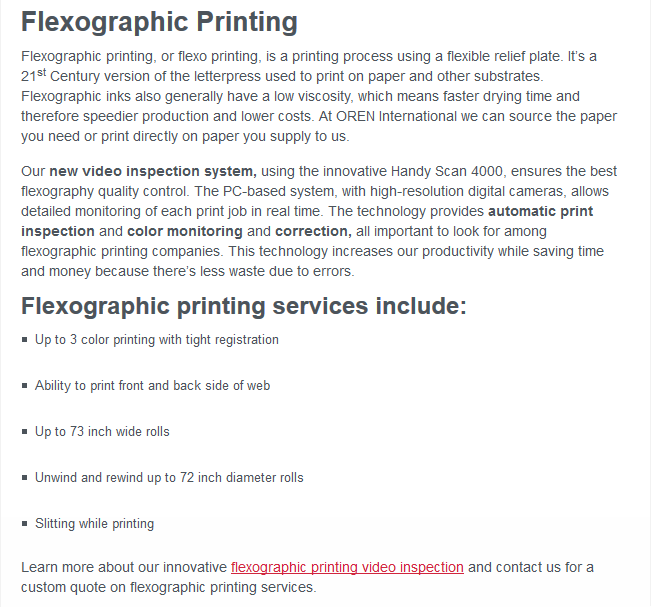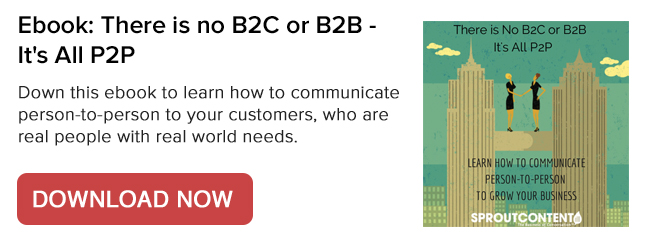
“We’re getting to common version, which is a superset of the functionality being built in Rainbow 5, which uses version 2 of the Asian code,” said our new client in a kick off meeting.
Yes, people really speak this way. Especially, when they work in complicated or regulated industries. While it’s one thing to banter about codes and supersets, or BI, ERPs and CRMs, when you’re behind the scenes developing amazing new tools for people to use, the conversation loses its flare when industry jargon becomes part of your customer facing content.
Let’s face it, no matter how complex, regulated, or intricate your services, nobody wants to read tedious industry jargon when they visit your company’s website or blog. People want to know that you understand their pain points and can help them solve their issues. They seek out products or services that can actually improve their lives, not make them ‘Google’ acronyms.
A production manager we work with recently emailed saying, “I’m pretty sure my programmer explained the issue, but I glazed over for the tech related conversation he had with me. It may or may not have been in a foreign language.” It was a foreign language. He was speaking “techlish.”
This production manager was faced with the challenge of translating their in-house jargon into new website content– and she worked at the company. Imagine how their customers would feel if they were tasked with reading this information without an English filter.
Still, many companies speak “techlish” in their content. Take a look at this website page:

You could make a case that the list of facts and figures –numbers, weights, and measurements for various types of paper – shows that the company knows how to convert paper because they throw out a lot of technical jargon.
But, it definitely doesn’t communicate the company’s full scope of services, elicit any feeling, or give you a sense of what its employees are passionate about and how they can help you.
Now look at this web page. It’s from the same company, offering the same services… but speaks less “techlish” and more English.

Here is another example of unnecessary “techlish”. Read the headline and intro copy for this blog post.

Now, read the English version.

Even companies in the most technical, regulated or traditionally “unglamorous” industries can create content that inspires and excites audiences. In fact, these businesses have a unique opportunity to talk to their prospects and educate them in a way that few other companies in their space do.
When they move away from “techlish,” they reveal their voice, personality, perspective and expertise through content that makes stronger and lasting connections with their audiences.
Here’s how to put the technical speak aside, and talk to your audience like humans:
1) Create Personas
Having a clear picture of who you are speaking to can help you resist the temptation to speak in acronyms and industry jargon. Before publishing any content, refer back to this persona and ask yourself if the actual human that you hope to be connecting with will understand every word included in the content.
2) Say Something
Declaring that you ‘deliver cutting-edge, turnkey solutions with innovative tools to improve ROI’ does not mean anything and certainly doesn’t make you sound interesting. Take a screenshot of the content on your web page and overlay it on a competitor’s site. Does it work with their brand? If so, start over.
3) Be a Teacher
If you’re working with subject matter experts who really don’t know how to speak English, then create a list of industry acronyms and define them in a blog post. Then, each time you feel an acronym absolutely must be included in your content, you can link to that blog and help your visitor feel smart.
4) Be a Giver
People don’t want to feel left in the dark. Especially, potential customers. Make sure to give them enough information through website content, blog posts and ebooks or free guides so they can research on their own before reaching out to you. Then, you can get in a room together and speak ‘techlish’ all day long.
It may seem like it’s easier to write content for fun, glamorous, popular industries, but, that’s not always the case. Popular industries are inundated with information, so creating new and interesting content can actually be more challenging. Just imagine the possibilities to create exciting content when nobody else in your industry is taking the lead.
No matter what industry you are in, your business has the opportunity to change the way it is perceived, to shatter the stereotype of your industry and become a leading voice that connects to other humans.
Learn more about growing your business by speaking to humans and dealing person-to-person rather than B2C or B2B in SPROUT Content’s free ebook.
![]()







